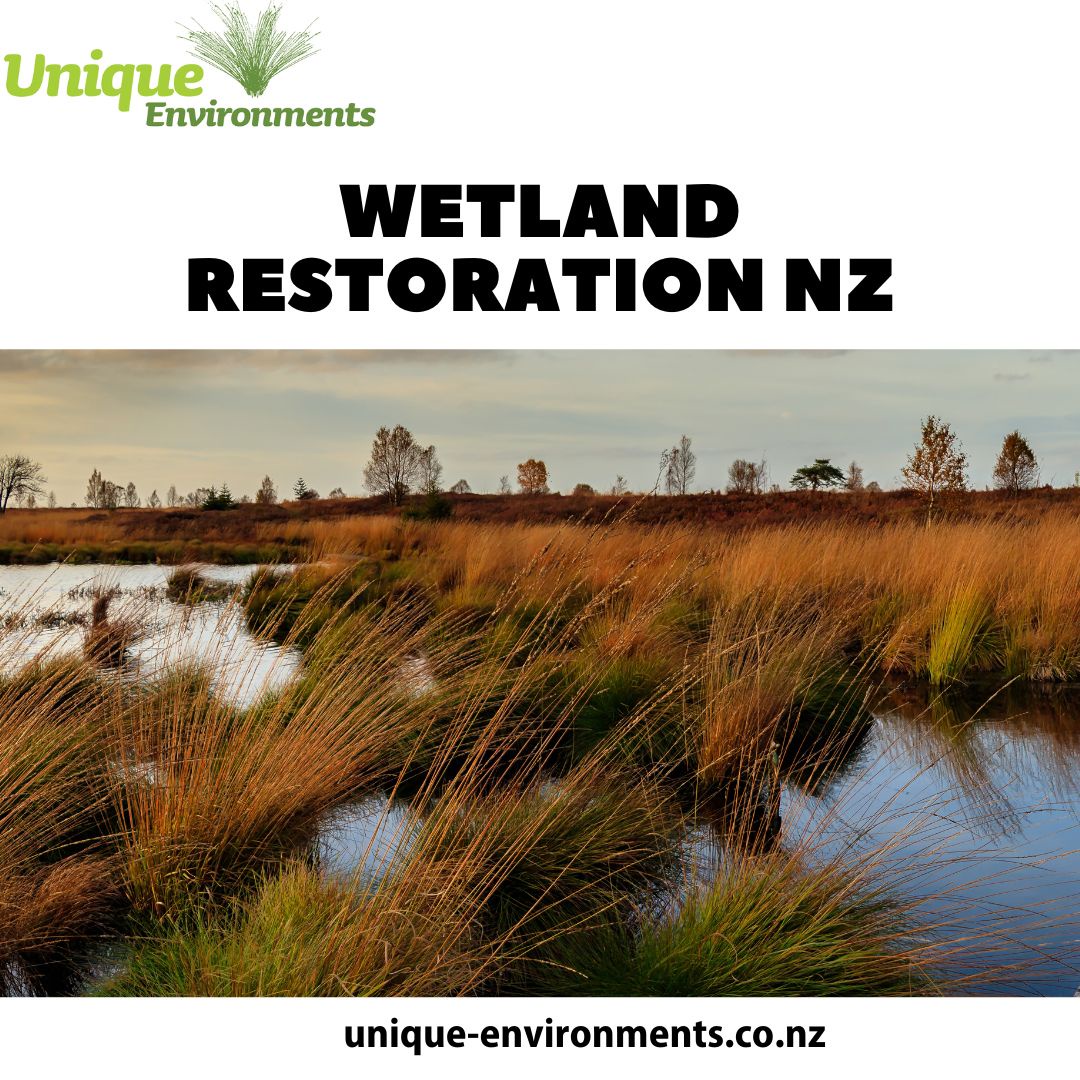Welcome to our blog post on the vital role of wetland restoration in NZ ecosystem health and biodiversity! Picture a serene landscape, abundant with lush vegetation and teeming with diverse wildlife. These thriving ecosystems are not only visually captivating but also play a crucial role in maintaining the delicate balance of our planet's natural environment. Amongst these invaluable ecological treasures, wetlands stand tall – or rather, they stand submerged – as extraordinary hubs of life and regeneration.
In this article, we will delve into the fascinating world of wetland restoration. We'll take you on a journey through its rich history, explore the functions it performs within ecosystems, and highlight the myriad benefits that arise from rejuvenating these precious habitats. So strap on your metaphorical boots as we embark on an adventure filled with wonderment and discovery!
Wetland Restoration: A Brief History
Wetland restoration has a rich and fascinating history, dating back centuries. The importance of wetlands in supporting diverse ecosystems was recognized by early civilizations, who relied on these unique habitats for food, water, and shelter. Ancient cultures around the world understood the value of wetlands and actively managed them to ensure their sustainability.
In more recent times, wetland destruction became a global issue as urbanization and industrialization expanded. Wetlands were drained for agriculture or filled in for development projects, leading to a significant loss of biodiversity and ecological functions. However, over the past few decades, there has been a growing understanding of the vital role that wetlands play in maintaining healthy ecosystems.
As awareness grew about the environmental consequences of wetland loss, efforts began to restore these valuable habitats. In New Zealand specifically, where wetlands are particularly important due to their high diversity and endemism rates, extensive restoration initiatives have been implemented. These efforts involve removing invasive species, replanting native vegetation (known as revegetation), improving hydrological conditions through dam removal or channel realignment, and creating habitat features like ponds or nesting sites.
Wetland restoration is an ongoing process that requires a long-term commitment from governments, organizations, and communities alike. It involves careful planning and implementation strategies tailored to each specific site's needs.
The ultimate goal is not just to recreate lost ecosystems but also to improve overall ecosystem health by promoting biodiversity conservation, resilience against climate change impacts, and water quality improvement.
By looking into the brief history of wetland restoration,it becomes clear that it is not simply an innovative concept but rather one rooted deep within our ancestral practices.
Wetland restoration embraces this wisdom while utilizing modern scientific knowledge.
With continued dedication, the future looks promising for preserving these invaluable natural resources.
Seeking sustainable solutions, governments, policymakers, and individuals can work together toward conserving our remaining precious wetlands
Functions of Wetland Restoration
1. Water filtration: Wetlands act as natural filters, purifying water by trapping sediment and removing pollutants. Through the process of wetland restoration, we can enhance this function and ensure cleaner water for both humans and wildlife.
2. Biodiversity support: Wetlands are incredibly rich ecosystems that support a wide variety of plants, animals, and microorganisms. By restoring wetlands, we create habitats for countless species to thrive and contribute to overall biodiversity.
3. Flood control: Wetlands have the remarkable ability to absorb excess water during heavy rainfall or flooding events. This reduces the risk of downstream flooding by acting as a sponge that slowly releases stored water over time.
4. Carbon storage: Wetlands play a crucial role in climate change mitigation by storing large amounts of carbon in their soils. Restoring these areas allows them to continue sequestering carbon from the atmosphere and reducing greenhouse gas emissions.
5. Nutrient cycling: Restored wetlands facilitate nutrient cycling processes such as nitrogen fixation and phosphorus retention, which are essential for maintaining healthy soil fertility and supporting plant growth.
6. Erosion control: The dense vegetation found in restored wetlands helps stabilize soil banks along rivers or coastlines, preventing erosion caused by strong currents or wave action.
7. Education and research opportunities: Restored wetlands serve as living laboratories where scientists can conduct studies on various ecological processes while providing educational opportunities for students to learn about ecosystem dynamics firsthand.
By understanding these vital functions of wetland restoration, we can appreciate its significance in promoting ecosystem health and biodiversity conservation not only within New Zealand but also worldwide!
The Benefits of Wetland Restoration
Wetland restoration plays an indispensable role in maintaining ecosystem health and promoting biodiversity. Through the removal of invasive species, revegetation efforts, and the restoration of natural hydrological processes, wetlands can thrive once again.
The benefits of wetland restoration are far-reaching. By acting as natural filters for water runoff, wetlands help to improve water quality and reduce pollution levels. They also act as carbon sinks, mitigating climate change by storing large amounts of carbon dioxide.
Moreover, restored wetlands provide essential habitats for a wide range of plant and animal species. From migratory birds to endangered amphibians, these ecosystems support unique biodiversity hotspots that contribute to global ecological balance.
Additionally, wetlands offer recreational opportunities for nature enthusiasts and educational resources for learning about the environment. Wetland areas can be utilized for birdwatching, hiking trails or simply appreciating the beauty of untouched landscapes.
As we continue to face environmental challenges such as habitat loss and climate change impacts in New Zealand (NZ), it is crucial that we prioritize wetland restoration efforts. By restoring these invaluable ecosystems back to their former glory through ecological restoration practices like revegetation in NZ, we not only ensure a sustainable future but also preserve our country's rich natural heritage.
Let us embrace the importance of wetland restoration in NZ and work together towards creating healthier ecosystems that will benefit both present and future generations alike! So let's take action today - restore our wetlands and safeguard their vital contributions to our planet's well-being!


No comments yet